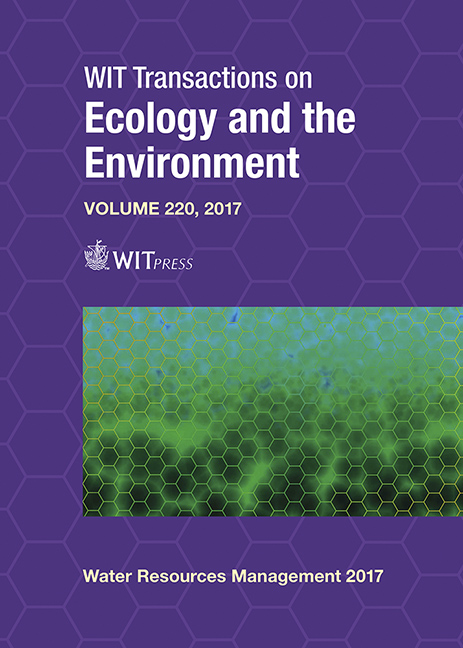REMOTE SENSING-BASED WATER ACCOUNTING TO SUPPORT GOVERNANCE FOR GROUNDWATER MANAGEMENT FOR IRRIGATION IN LA MANCHA ORIENTAL AQUIFER, SPAIN
Price
Free (open access)
Transaction
Volume
220
Pages
8
Page Range
119 - 126
Published
2017
Size
318 kb
Paper DOI
10.2495/WRM170121
Copyright
WIT Press
Author(s)
ALFONSO CALERA, JESÚS GARRIDO-RUBIO, MARIO BELMONTE, IRENE ARELLANO, LORENA FRAILE, ISIDRO CAMPOS, ANNA OSANN
Abstract
Mapping irrigated surfaces and the crops growing on these surfaces by using Remote Sensing is a well known first relevant step to contribute to water governance at different scales ranging from farm, irrigation scheme and, by scaling-up, to the whole river basin. These maps provide a first estimation of the spatially distributed water flows about evapotranspiration and irrigation water requirements based on the cropping agronomic knowledge. During the last 20 years, annual maps of crops and irrigated surfaces elaborated by using time series of multispectral satellite imagery have been in the basis of a successful water management of a big groundwater body placed in the Southern Spain. Threatened by over-exploitation, this aquifer extends over around 10,000 km2 of land surface, in the middle Júcar river basin, supporting around 100,000 ha of irrigated crops, and providing drinking water for 150,000 inhabitants, with competing uses from downstream users. This paper describes the main learned lessons. In addition, the paper tackles a necessary further step in the context of the current requirements for water governance of this aquifer: the direct remote sensing-based water accounting, by quantifying agricultural water flows (e.g. rainfall, irrigation, evapotranspiration, drainage and recharge, at practical spatial and temporal scales for water governance purposes). This RS-based WA approach relies on dense time series of multispectral imagery acquired by the multisensor constellation formed by Landsat 8 and Sentinel-2, jointly with meteorological data. By this, we discuss the technical and non-technical feasibility to rely monitoring water abstraction on this RS-based WA approach, providing the basis for a hybrid system.
Keywords
remote sensing, water accounting, mapping, irrigated surfaces, irrigation





